-
Car Reviews
- All reviews
- Midsize SUVs
- Small cars
- Utes
- Small SUVs
- Large SUVs
- Large cars
- Sports SUVs
- Sports cars
- Vans
Latest reviews
- Car News
-
Car Comparisons
Latest comparisons
- Chasing Deals
Is the new 2.2L engine a better proposition than the phased-out 1.9L unit, or is the proven 3.0L still the only one to buy?
Mazda wants a bite of the lucrative tradie and fleet market pie. That’s why we were presented with a hard hat and high vis vest at the 2026 BT-50 2.2-litre diesel launch, to live the tradie life for a day. I politely declined.
The Hiroshima brand has put the 1.9L turbo-diesel engine out to pasture, replacing it with this new 2.2-litre unit that produces an on-paper uninspiring 400Nm and 120kW. Well, replace isn’t quite the right word, as the 2.2 is a stroked and bored-out version of the 1.9L.
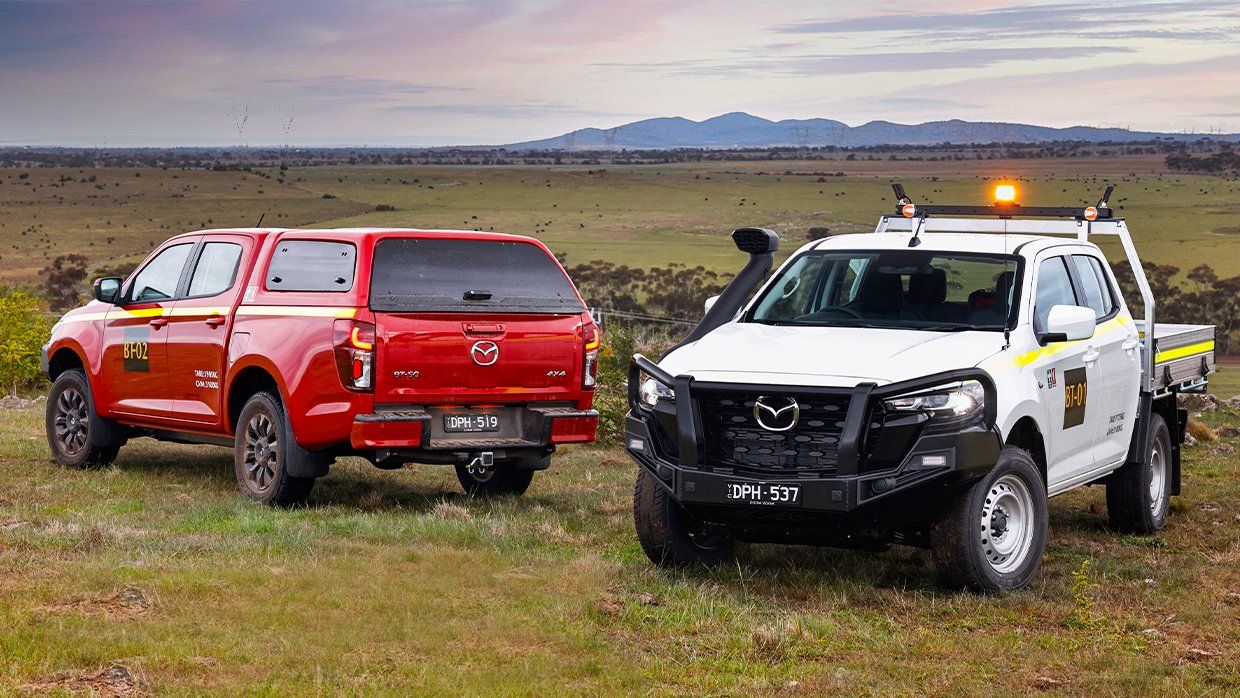
Claimed fuel economy now hovers around the 6.3L/100km range, which is approximately 1.0L/100km better than the 3.0L engine. Carbon dioxide (CO2) emissions are listed at 167g-188g per kilometre for the 2.2L and 185g-204g for the big three-litre unit.
Even a small gain could be big news for under incoming New Vehicle Efficiency Standards (NVES) — the headline targets are 180g/km for 2026 which then drops sharply to 150g/km in 2027.
Stray above these targets and importers will need to pay fines (in other words, pass the added costs onto consumers), which will add up to hefty numbers for those without EVs and PHEVs in their stables.
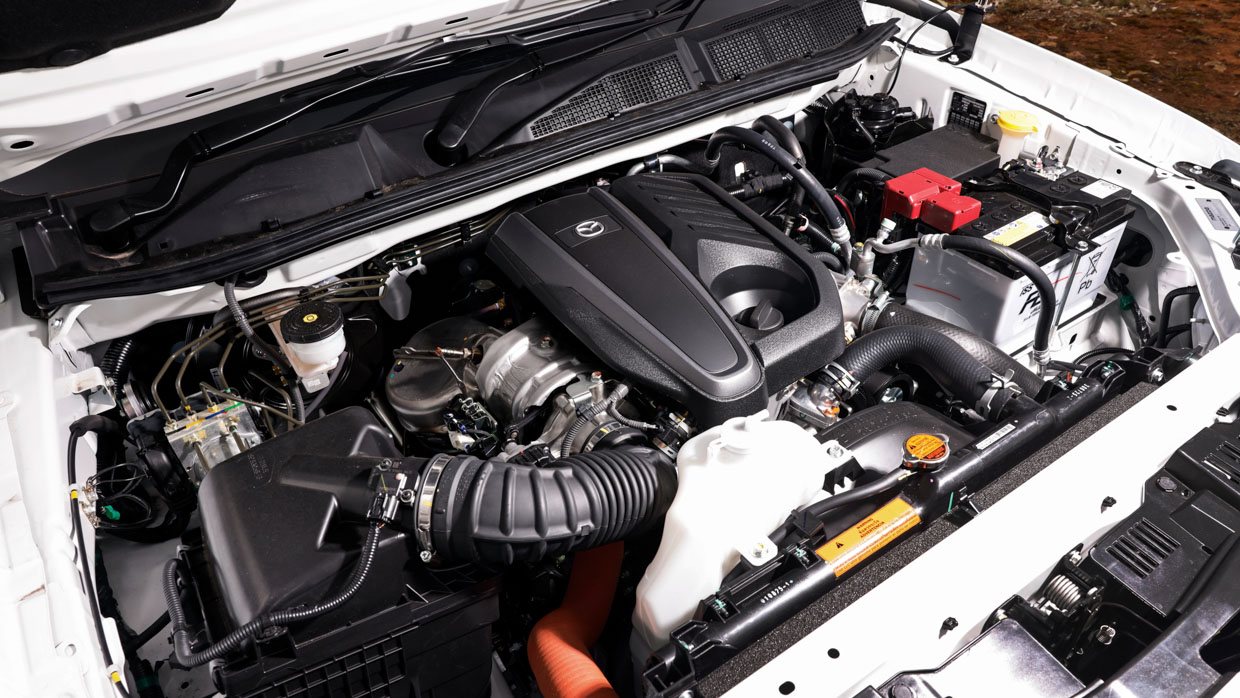
The new 2.2L is also a little bit cheaper for buyers than the 3.0L 4JJ3-powered Mazda BT-50, saving about $2500 depending on grade. Which could be an appealing option for fleet markets more so than private buyers. And why is that?
Well, think about the numbers: if a fleet is buying 100 units, and they can pocket $2500 on each one, that’s a saving of $250,000. A nice little boost for the office Christmas party fund.
Mazda also has a new, fleet-focused 2.5-litre petrol CX-60 making a double-whammy for the Japanese brand, with a premium-feeling work ute and medium SUV bundle for fleet customers.
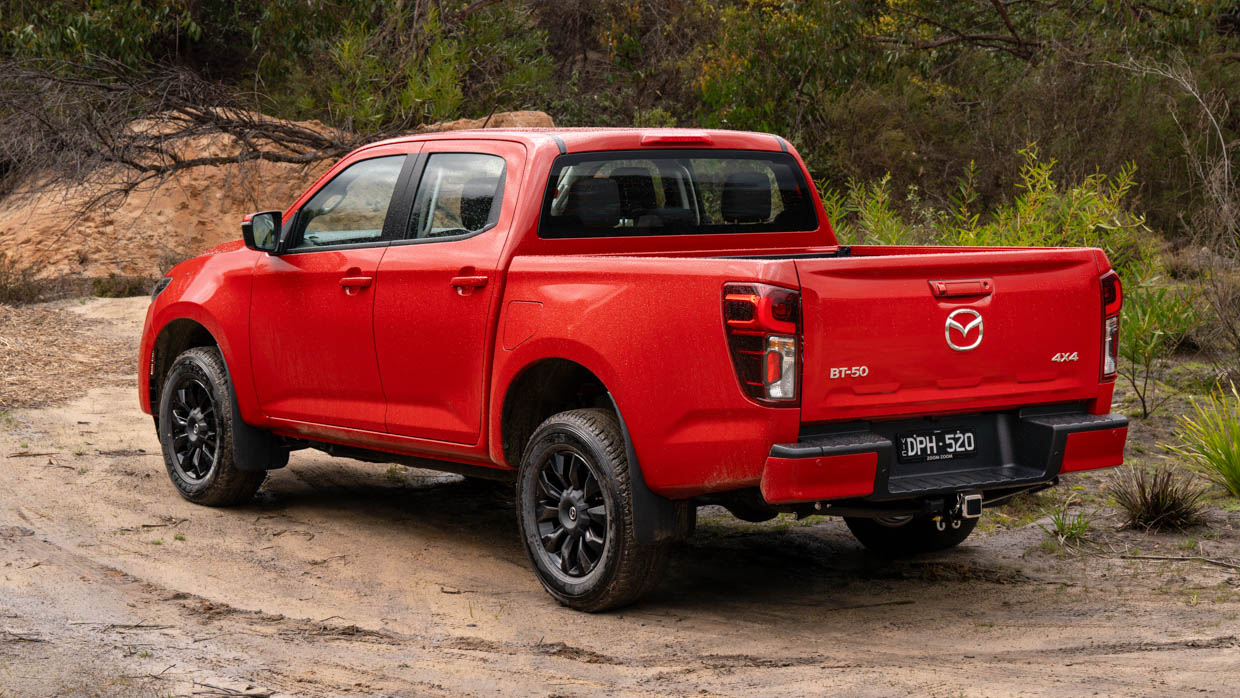
So that’s the first reason why the Mazda BT-50 and Isuzu D-Max (on which it is based) offer a lower performance model. With that slightly lower price tag and reduced emissions, in an effort to entice trades, fleet and mine buyers to open their wallets and buy in bulk.
The other reason is that the 3.0L 4JJ3 motor, which is highly regarded for being strong as an ox and rather de-tuned from the factory, is getting old, and is only really big in the Australian market.
With strict emissions laws looming, it’ll be hard to keep selling it — another option was required.
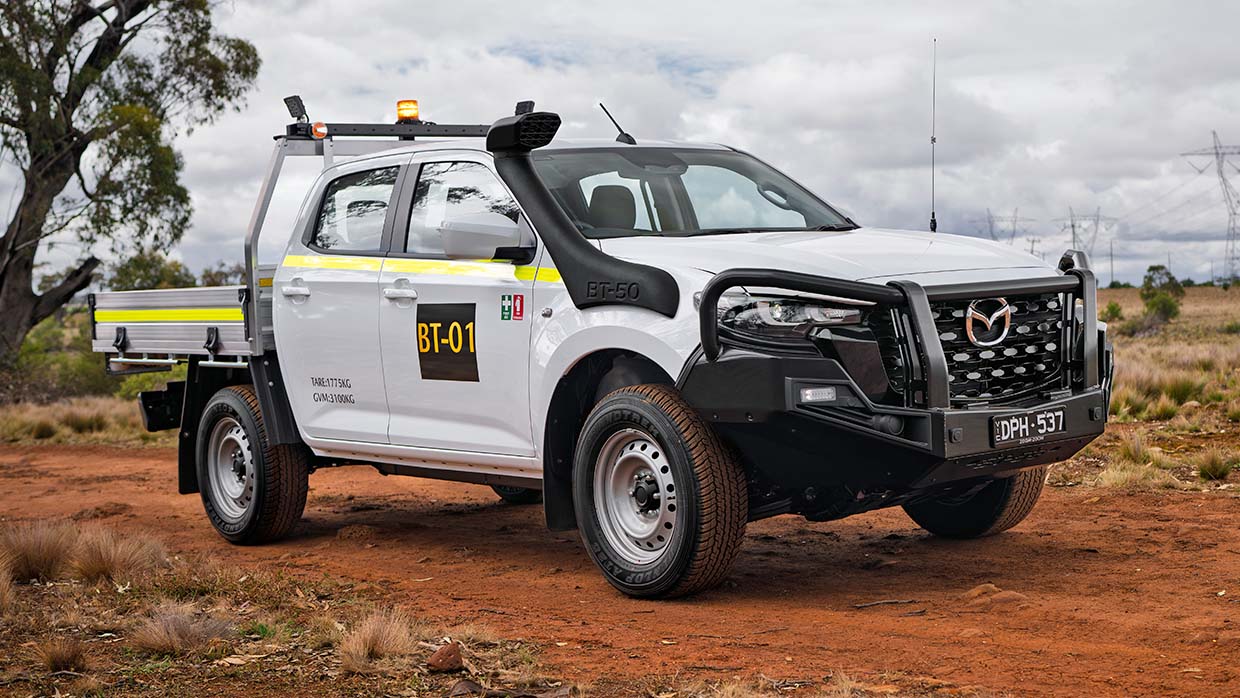
Sure, the performance of the 1.9L was adequate when cruising on a highway, and it sipped diesel, but even a bicycle going downhill accelerated faster. Which is why towing capacity was listed at 3000kg rather than 3500kg, the industry standard. That 1.9L just didn’t have the grunt to pull that much weight.
I have no doubts the 1.9L is a strong and reliable unit, one look at the Thailand 4×4 scene, where this vehicle is manufactured, shows all sorts of power upgrades happening.
But it hasn’t struck a chord with the Australian market, who has been sold the spirit of the 4J truck motor since day one. A victim of Isuzu’s own marketing success, if you will.
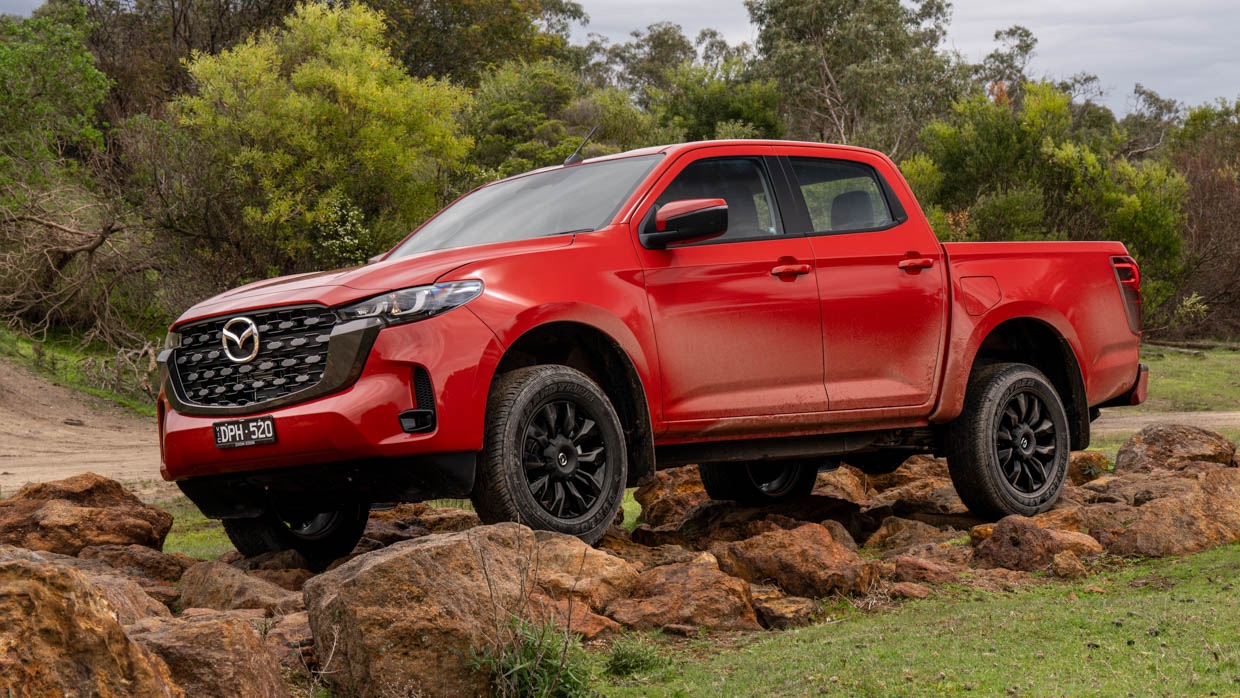
So how does the 2025 Mazda BT-50, with the 2.2L turbo-diesel power-plant mated to a new eight-speed transmission (up from the previous AISIN six-speed) drive? Not great, to be honest. But that’s the point. It’s not supposed to be inspiring, it is a tool for work and getting the job done.
The motor lacks torque, it wouldn’t spin a tyre when accelerating hard from a start. Brief testing saw 0-100 times of just under 12 seconds, to paint a picture.
It’s also loud on take-off, with heaps of clatter. This is a surprise, considering how much criticism Isuzu and Mazda received for the amount of noise the 3.0L produces. There’s also a fair chunk of turbo-lag while moving off the line.
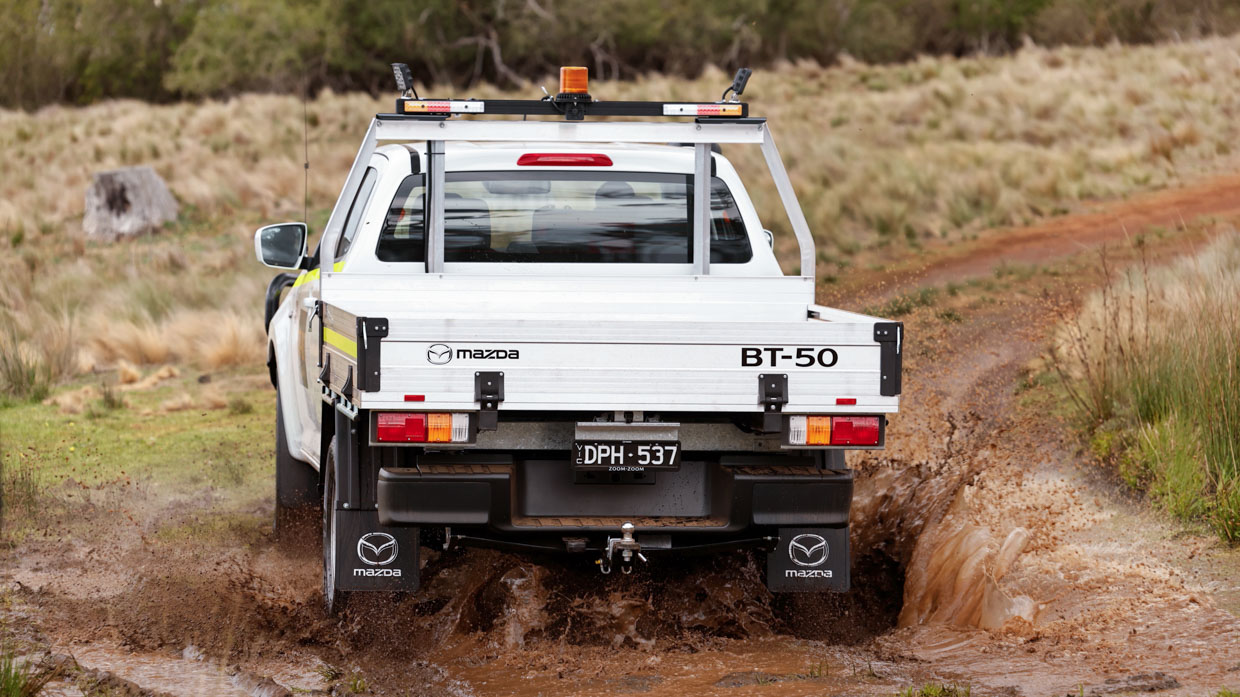
It would be safe to assume this engine is running a high amount of turbo boost pressure to get it moving — hence the lag while the turbo does its best to get spinning.
This lack of torque shows there is improvement required regarding the transmission tune. It almost feels like the transmission is asking permission from the engine to change gears. Resulting in recalcitrant gear changes, with flaring between shifts. Please sir, can I have some more torque?
Unladen suspension feel is naturally on the firmer side, not as stiff as the current generation Toyota Hilux, but still on the jiggly side. Steering feel though, is excellent. Full points in that department, with a decent turning circle also experienced.
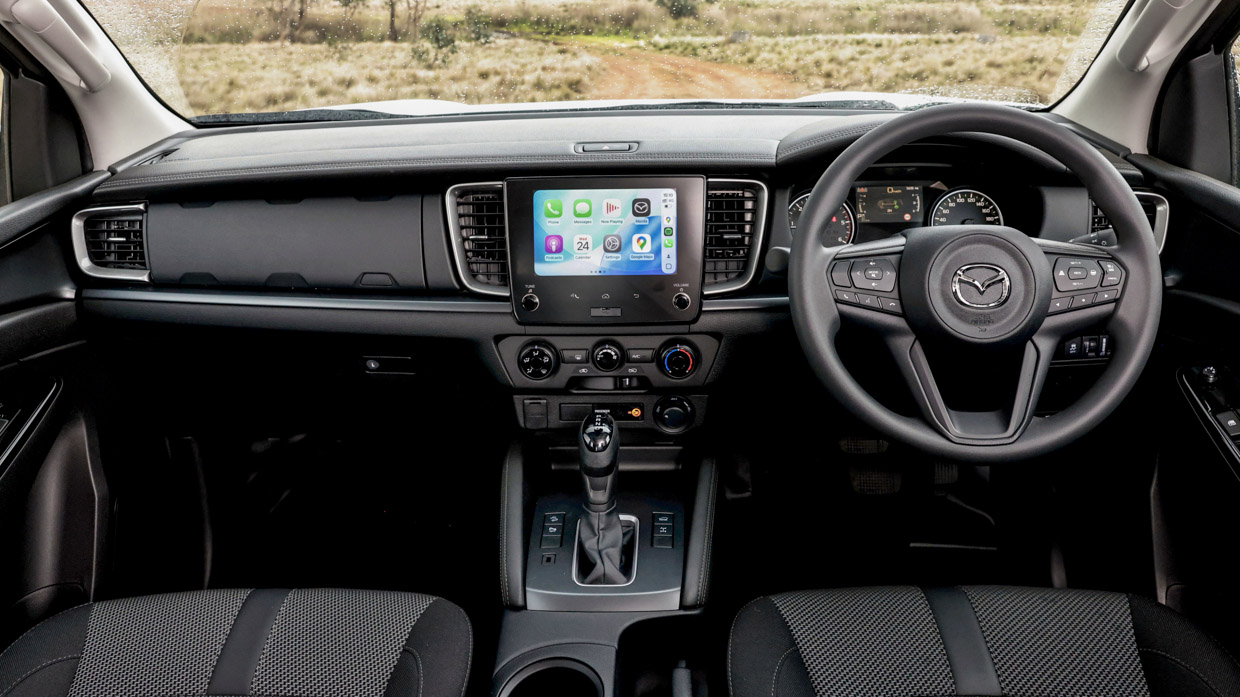
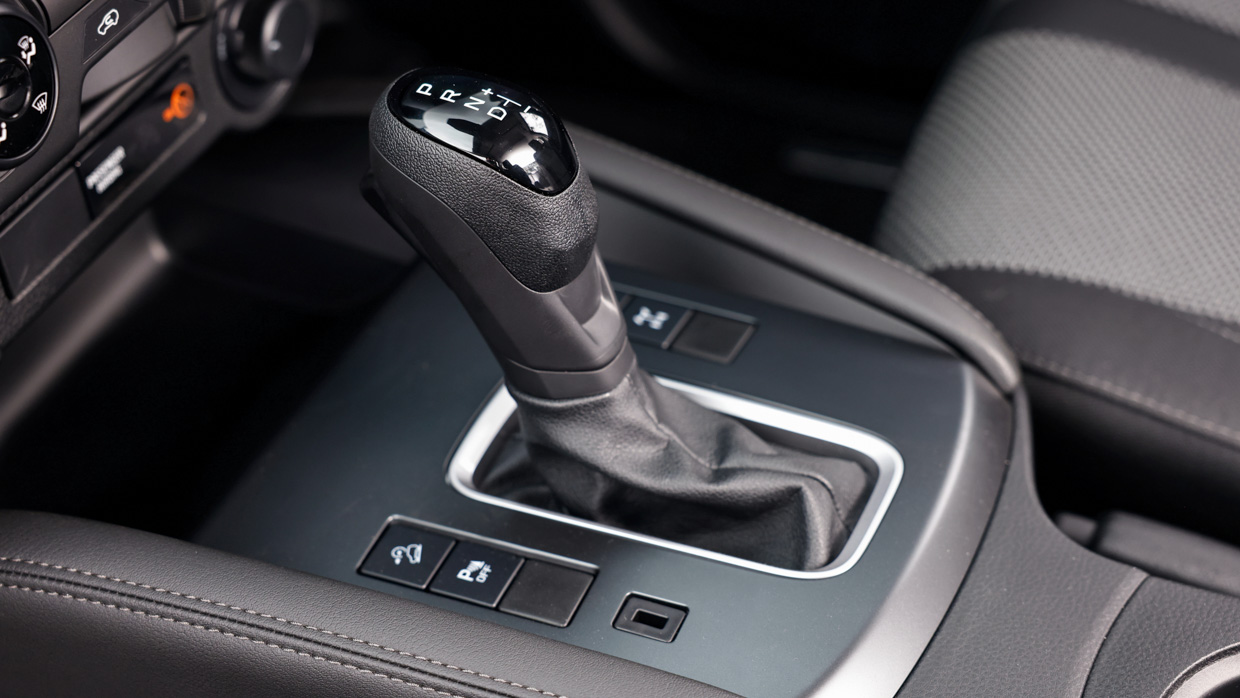
The vehicle felt planted at all times, even without the option of full-time 4×4. Which would be a useful addition to the vehicle, when you think about the modern crop of dual-cabs such as the Kia Tasman and Mitsubishi Triton, which are mostly offering a full-time 4×4 option for more grip on wet slippery roads.
Cabin appointments feel robust, and well thought out. It’s a nice interior to be in, especially for a ute. I particularly like the seat comfort, with the right amount of bolstering, in the right places. This is a ute you could happily spend all day in and not feel too sore or tired by knock-off time.
There are three interior offerings depending on model grade selected: GT spec sees black leather seat trim; SP grade sees a rather unique (again, for a ute) Terracotta ‘Maztex’ synthetic suede trim. Black cloth is standard on lower specs.
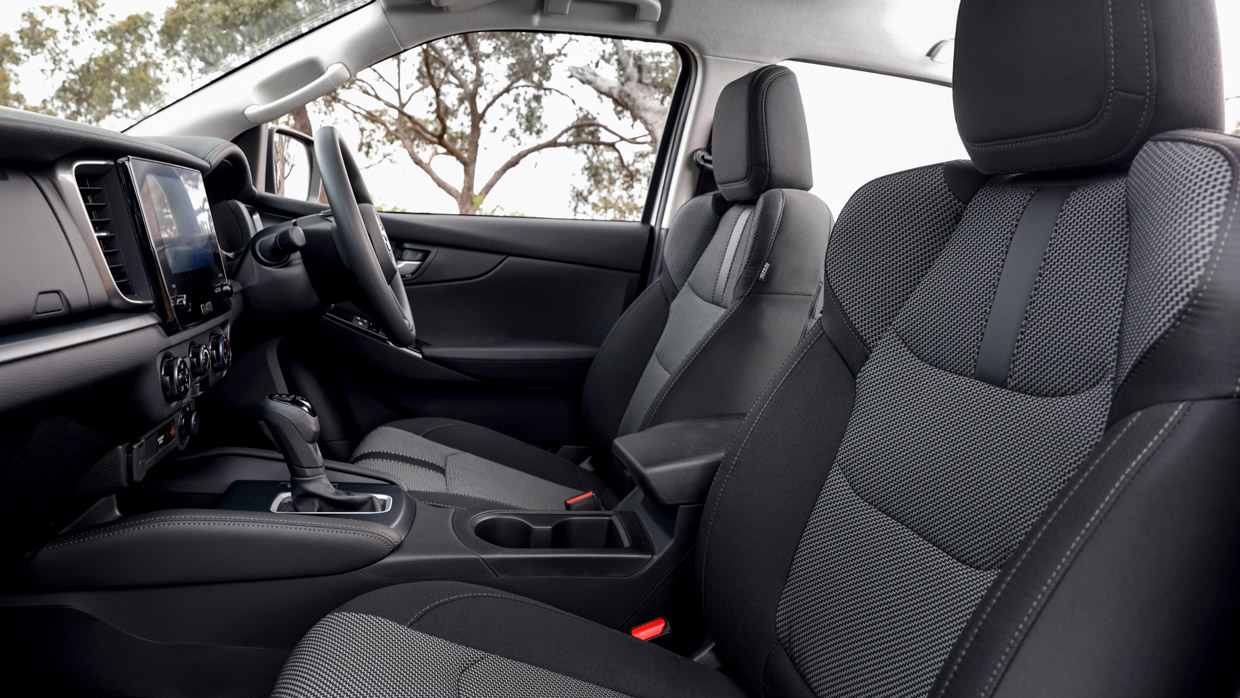
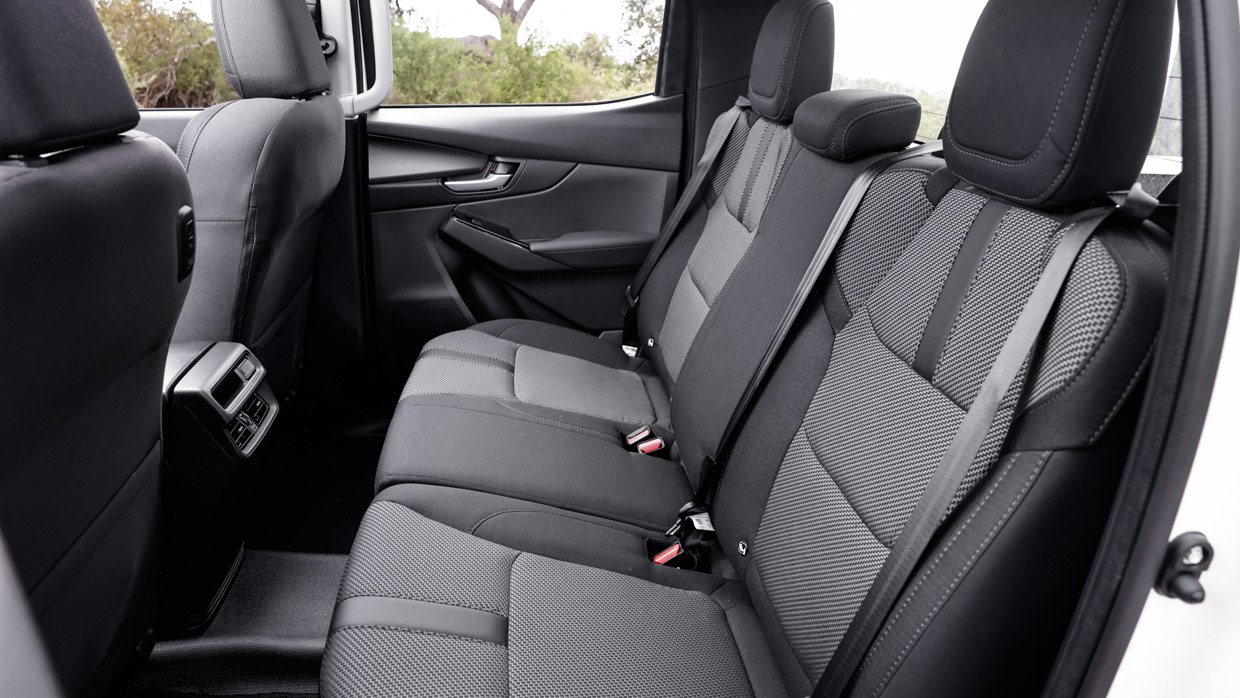
Brake feel, however, is on the spongy side, with a fair amount of pedal travel required for take up. It feels as though the rear drum brakes need some further adjustment.
At least the brakes were effective in slowing the BT-50, and some would argue a progressive brake pedal is an advantage when off-road in the interest of smoothness.
I wasn’t able to prove this point however, as there was no opportunity for off-road testing. We’ll correct this with a full garage review soon.
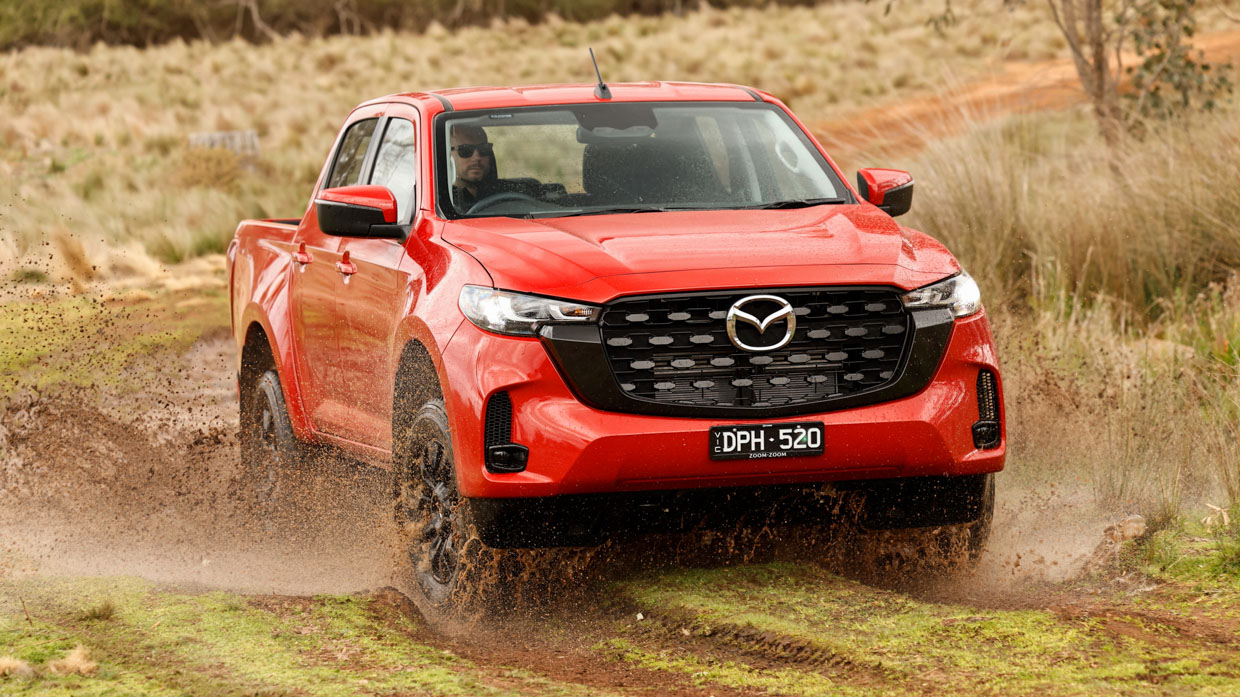
As the 4×4 system is unchanged — a traditional one with 2H, 4H and 4L modes activated via a rotary dial — the basic capability remains in the proven BT-50/D-Max platform.
You get a rear electronically activated differential lock, as well as the relatively-new Rough Terrain Mode which tightens up the traction control system when engaged to offer mountain-goat like abilities in technical terrain.
It’s a solid performer off-road from previous experience, and there’s no reason to suggest this has changed for 2025.
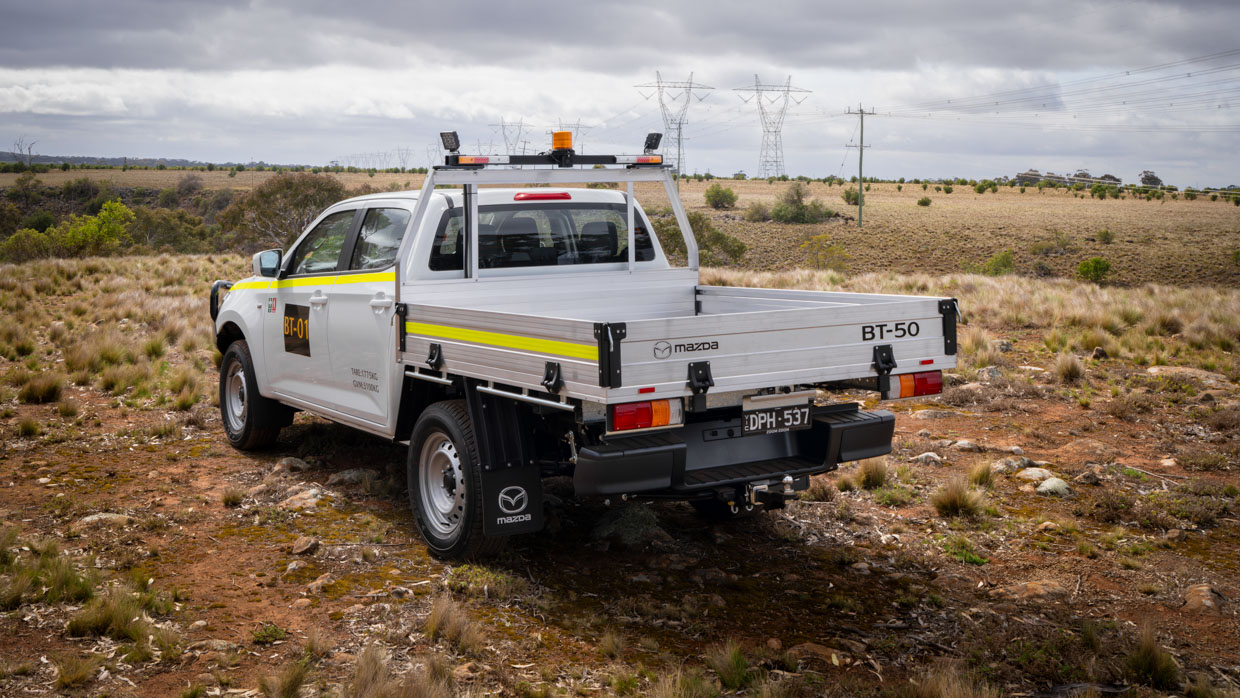
In summary, for an enthusiast that is going to tow or use the vehicle off-road, it’s best to nab a 3.0-litre BT-50 while it’s still here. It’s a rock-solid engine, with loads of further abilities in the aftermarket. You’ll also reap the benefits with a higher resale value when it’s time to sell.
If you need a fleet of 100 utes, and have been eyeing off the big ballroom at the Hilton for your work Christmas party, the 2.2L might just make that happen.
Key specs (as tested)
About Chasing cars
Chasing Cars reviews are 100% independent.
Because we are powered by Budget Direct Insurance, we don’t receive advertising or sales revenue from car manufacturers.
We’re truly independent – giving you Australia’s best car reviews.
The estimate provided does not take into account your personal circumstances but is intended to give a general indication of the cost of insurance, in order to obtain a complete quote, please visit www.budgetdirect.com.au. Estimate includes 15%^ online discount.
^Conditions Apply
Budget Direct Insurance arranged by Auto & General Services Pty Ltd ACN 003 617 909(AGS) AFSL 241 411, for and on behalf of the insurer, Auto & General Insurance Company Limited(ABN 42 111 586 353, AFSL 285 571).Because we don’t know your financial needs, we can’t advise you if this insurance will suit you. You should consider your needs and the Product Disclosure Statement before making a decision to buy insurance. Terms and conditions apply.
Indicative quote based on assumptions including postcode , 40 year old male with no offences, licence suspensions or claims in the last 5 years, a NCD Rating 1 and no younger drivers listed. White car, driven up to 10,000kms a year, unfinanced, with no modifications, factory options and/or non-standard accessories, private use only and garaged at night.
^Online Discounts Terms & Conditions
1. Discounts apply to the premium paid for a new Budget Direct Gold Comprehensive Car Insurance, Third Party Property Only or Third Party Property, Fire & Theft Insurance policy initiated online on or after 29 March 2017. Discounts do not apply to optional Roadside Assistance.
2. Discounts do not apply to any renewal offer of insurance.
3. Discounts only apply to the insurance portion of the premium. Discounts are applied before government charges, taxes, levies and fees, including instalment processing fees (as applicable). The full extent of discounts may therefore be impacted.
4. We reserve the right to change the offer without notice.